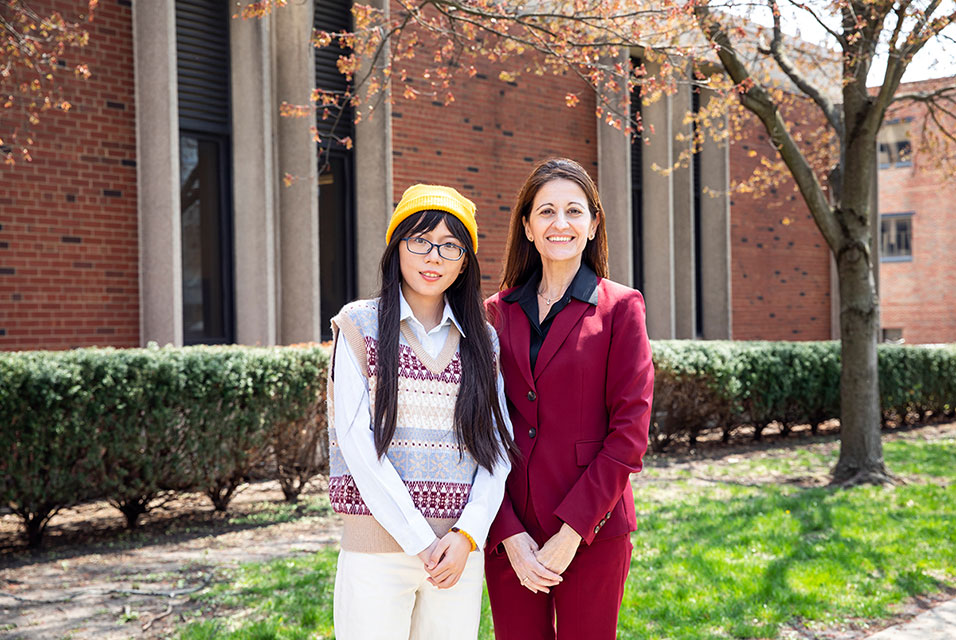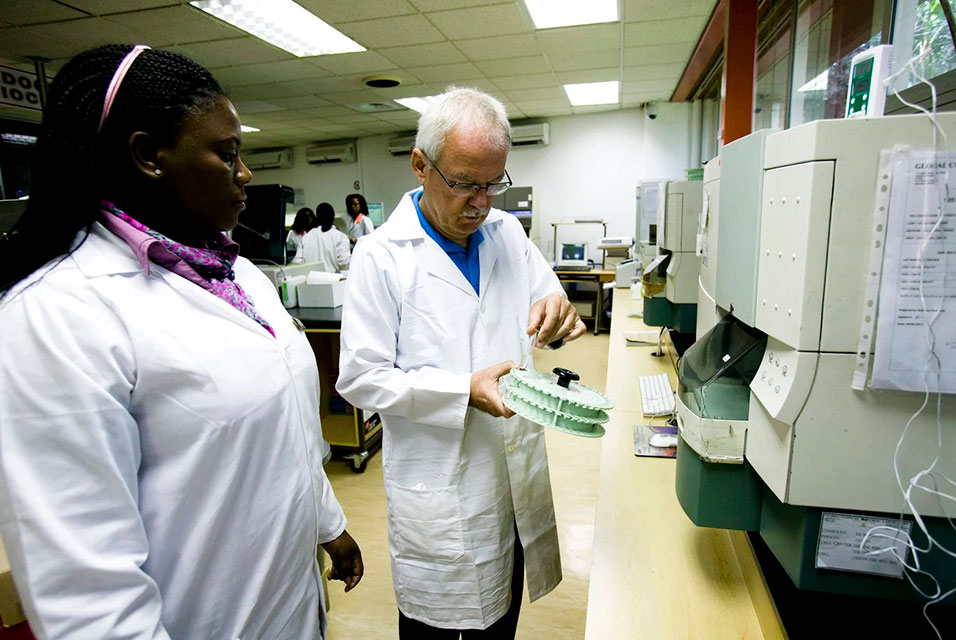CHAMPAIGN, IL.- Using single calcite crystals with varying surface roughness allows engineers to simplify the complex physics that describes fault movement. In a new study from the
University of Illinois Urbana-Champaign, researchers show how this simplification may lead to better earthquake prediction.
Scientists describe fault behavior using models based on observational studies that account for the frictional coefficients of rocks and minerals. These “rate-and-state” equations calculate the fault strength, which has implications for earthquake strength and frequency. However, applying these empirical models to earthquake prediction is not practical because of the number of unique variables to be considered for each fault, including the effect of water.
The study, led by civil and environmental engineering professor Rosa Espinosa- Marzal, looks at the relationship between friction and the surface roughness of calcite – one of the most common rock-forming minerals in Earth’s crust – to formulate a more theoretical approach to defining rate-and-state laws.
The findings were published in the Proceedings of the National Academy of Sciences.
“Our goal is to examine the nanoscale processes that may trigger fault movement,” said Binxin Fu, a CEE graduate student and the first author of the study. “The processes we investigate at the nanoscale are less complex than macroscale processes. Because of this, we aim to use microscopic observations to bridge the gap between the nanoscale and macroscale worlds to describe fault behavior using less complexity.”
The roughness of a mineral crystal depends primarily on its atomic structure. However, the researchers said the rocks in contact zones are scraped, dissolved and annealed as they rub past each other, also affecting their nanoscale texture.
To test how nanoscale mineral roughness can affect fault behavior, the team prepared atomically smooth and rough calcite crystals in dry and wet environments to simulate dry rocks and those containing pore water. Atomic force microscopy measured friction by dragging a tiny, pressure-mounted silicon tip across different crystal surfaces exposed to simulated fault zone conditions: wet surface and smooth calcite; wet surface and rough calcite; dry surface and smooth calcite; and dry surface with rough calcite.
“Friction can increase or decrease with sliding velocity depending on the mineral types and the environment,” Espinosa-Marzal said. “We found that in calcite, friction typically increases with sliding rate along rougher mineral surfaces – and even more in the presence of water. By using data from such a common mineral type and a limited number of contact scenarios, we reduce the analysis’s complexity and provide a fundamental understanding of the rate-and-state equations.”
The team compared its experimental results to studies from natural settings with calcite-containing rock at shallow crustal levels.
“Our results agree with a recent study showing that water lowers the fault strength compared with dry conditions,” Espinosa-Marzal said. ”Our findings are also consistent with another study showing that low–frequency earthquakes tend to occur along wet faults, suggesting that decreased friction – caused by water – may be a mechanism for slow earthquakes in some environments.”
This advance may help seismologists redefine rate-and-state laws to determine where stress is building up in the crust – and give clues to where and when future earthquakes may occur.
The team acknowledges that there are still many other factors to consider, including temperature and the influence of other common crustal minerals such as quartz and mica. The researchers plan to incorporate these variables into future models.
The National Science Foundation supported this study.
Espinosa-Marzal also is a professor of materials science and engineering, and affiliated with the National Center for Supercomputing Applications and the Carl R. Woese Institute for Genomic Biology at the U. of I.










